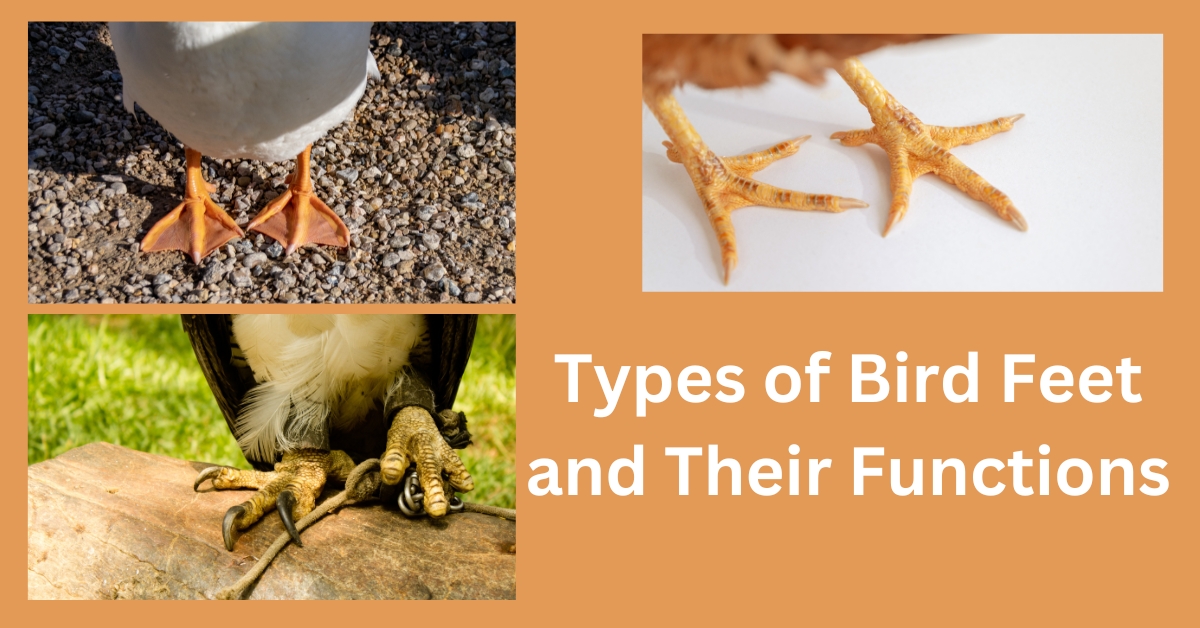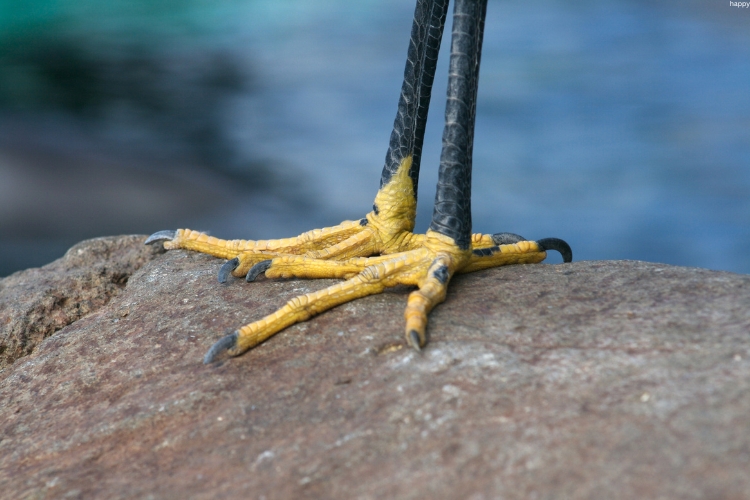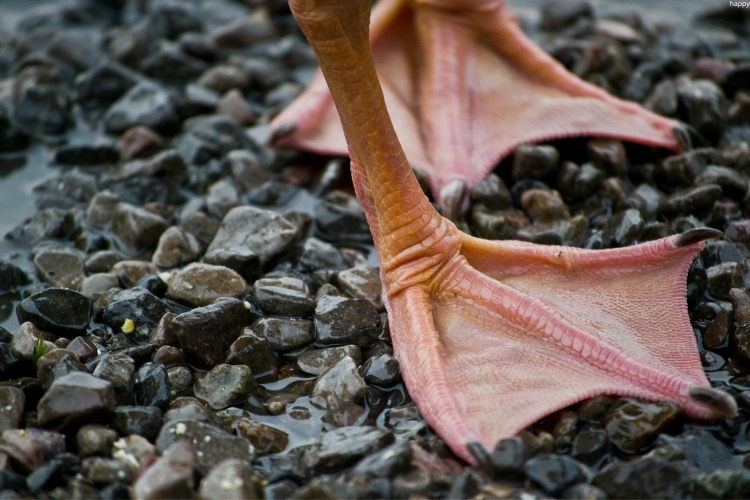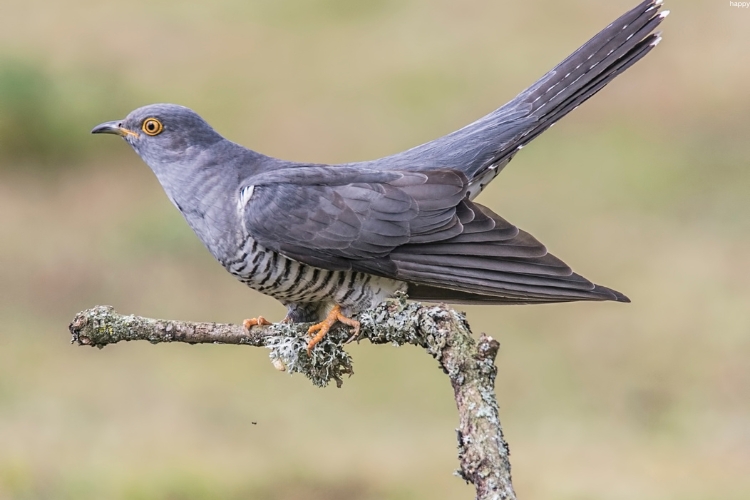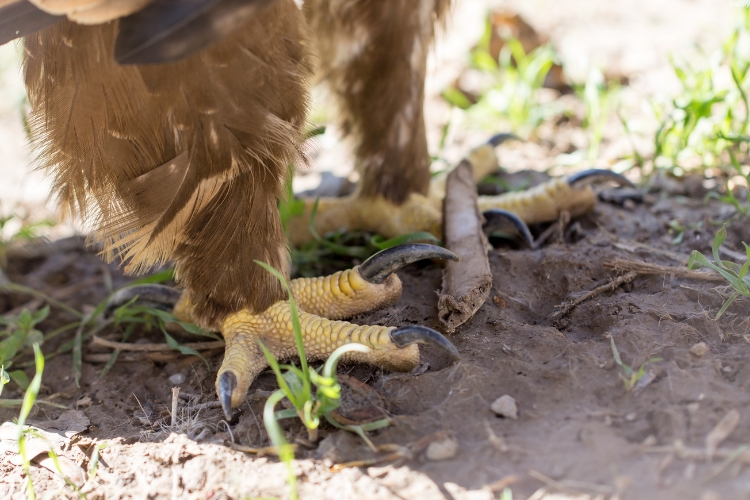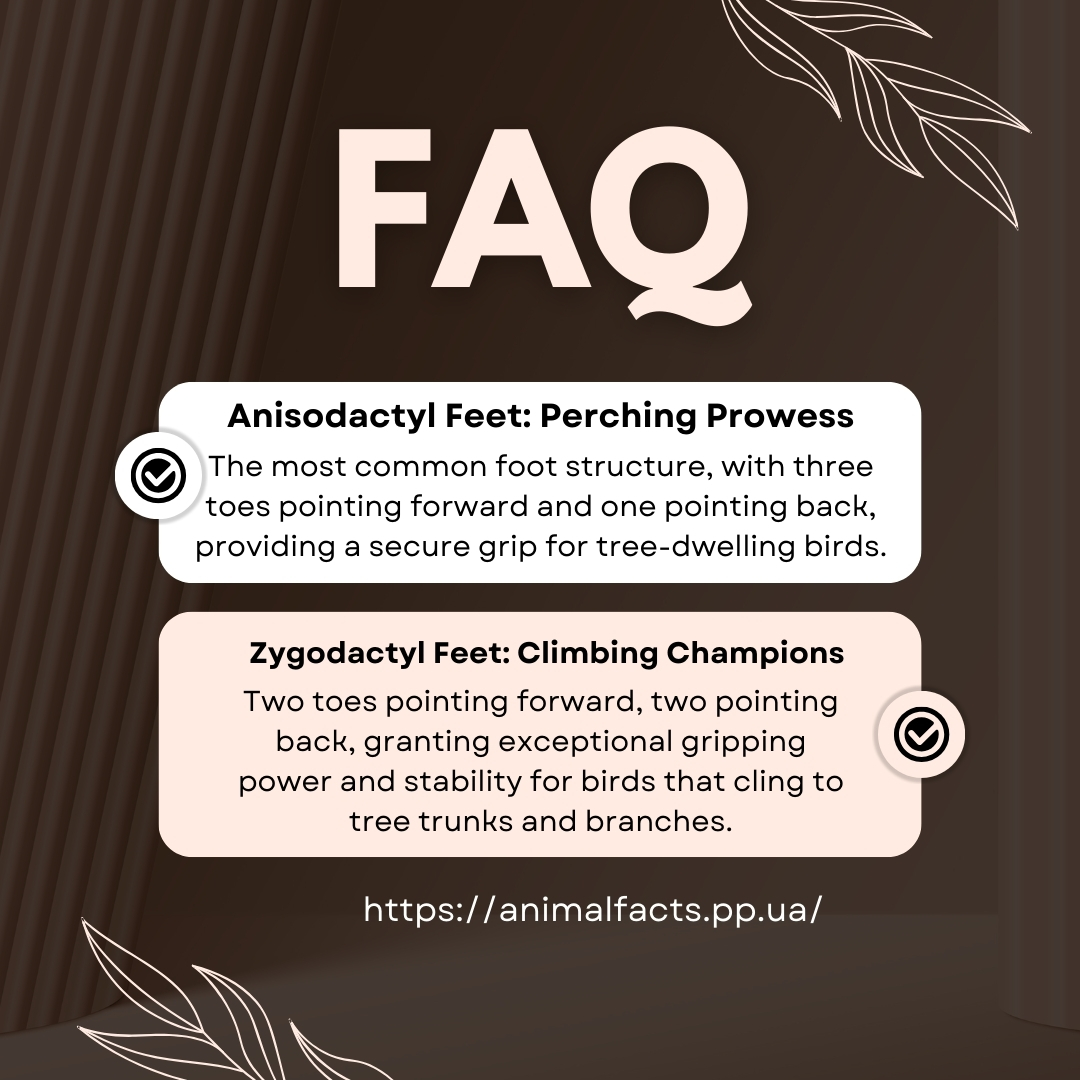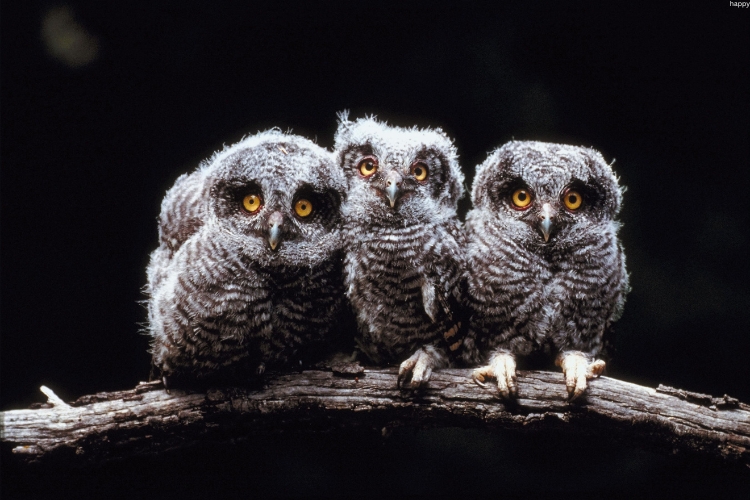As the saying goes, “you can judge a bird by its feathers,” but an even more telling feature of a bird’s anatomy is its feet.
Bird feet are remarkably diverse, each type adapted to serve the unique needs and lifestyles of different avian species.
From the powerful talons of raptors to the delicate, nectar-feeding feet of hummingbirds, the structure and function of bird feet are fascinating to explore.
In this comprehensive article, we’ll dive deep into the world of bird feet, examining the various types, their adaptations to different habitats and feeding behaviors, and the specialized functions they serve.
By understanding the incredible diversity and adaptability of bird feet, we can gain valuable insights into the remarkable evolutionary journey of these winged creatures.
Key Takeaways
Here are the key takeaways from the in-depth article on the fascinating world of bird feet:
- Bird feet exhibit remarkable diversity, with each unique foot structure representing a specialized adaptation to a particular ecological niche and lifestyle.
- The primary types of bird feet include anisodactyl, zygodactyl, palmate, totipalmate, lobate, raptorial, heterodactyl, and pamprodactyl, each with distinctive characteristics and functions.
- The structure of a bird’s feet is closely tied to its habitat and feeding behaviors, allowing birds to thrive in a wide range of environments, from tree-dwelling to aquatic.
- Feet play crucial roles in hunting and fishing, nectar-feeding, scavenging, and ground foraging, as well as specialized functions like mating dances, nest building, and thermoregulation.
- The evolutionary adaptations of bird feet showcase the incredible ingenuity and adaptability of these winged creatures, providing valuable insights into the complex web of life on our planet.
- Understanding the diversity and functions of bird feet can foster a deeper appreciation for the intricate relationships between form and function in the natural world.
- Studying the remarkable adaptations of bird feet can inspire wonder and curiosity, leading to a greater understanding and stewardship of the avian species that share our world.
The Fascinating Diversity of Bird Feet
Birds have evolved a remarkable array of foot structures, each uniquely suited to the demands of their particular lifestyles and environments.
Let’s explore the primary types of bird feet and their distinctive characteristics.
1. Anisodactyl Feet
Anisodactyl feet are the most common foot structure among birds, with three toes pointing forward and one toe pointing backward.
This arrangement provides a secure grip on branches, enabling tree-dwelling species to perch and move with ease. Birds with anisodactyl feet, such as songbirds, are adept at hopping, perching, and navigating through the canopy.
2. Zygodactyl Feet
Zygodactyl feet feature a unique configuration – two toes pointing forward and two toes pointing backward.
This specialized foot structure grants exceptional gripping power and stability, allowing birds to climb and cling to tree trunks and branches with remarkable ease.
Woodpeckers, parrots, and cuckoos are among the bird species that possess zygodactyl feet.
3. Palmate Feet
Palmate feet, characterized by webbing between the toes, are found in many aquatic bird species, including ducks, geese, and loons.
This adaptation enhances the birds’ ability to propel themselves efficiently through the water, making them accomplished swimmers.
The webbing helps to create a larger surface area for pushing against the water, enabling these birds to navigate their aquatic environments with grace and agility.
4. Totipalmate Feet
Totipalmate feet take the concept of webbing even further, with all four toes connected by a continuous membrane.
This unique foot structure is seen in birds like pelicans and cormorants, whose totipalmate feet serve as powerful paddles, allowing them to effectively navigate and capture prey in the water.
5. Lobate Feet
Lobate feet, with lobes of skin along the toes, are a specialized adaptation found in grebes and coots.
This structure enables these birds to effectively swim and dive in search of food, while also providing support for walking on floating vegetation, such as lily pads.
6. Raptorial Feet
Raptorial feet, with sharp, curved talons, are the trademark of birds of prey, including hawks, eagles, and owls.
These specialized feet serve as formidable hunting tools, enabling these birds to capture, grasp, and tear apart their prey with impressive precision and strength.
7. Heterodactyl Feet
Heterodactyl feet, characterized by two toes pointing forward and two toes pointing backward, are a less common but still remarkable adaptation.
This foot structure is found in a small group of birds, such as trogons and hoopoes, and allows for exceptional climbing and perching abilities.
8. Pamprodactyl Feet
Pamprodactyl feet, where all four toes can be directed forward, are a unique adaptation seen in some swifts and nightjars.
This specialized foot structure aids these birds in clinging to vertical surfaces, such as building walls or tree trunks, where they often rest and nest.
Table: Types of Bird Feet and their Characteristics
| Foot Type | Characteristics | Example Birds |
|---|---|---|
| Anisodactyl | Three toes pointing forward, one toe pointing backward | Songbirds, perching birds |
| Zygodactyl | Two toes pointing forward, two toes pointing backward | Woodpeckers, parrots, cuckoos |
| Palmate | Webbing between the toes | Ducks, geese, loons |
| Totipalmate | All four toes connected by webbing | Pelicans, cormorants |
| Lobate | Lobes of skin along the toes | Grebes, coots |
| Raptorial | Sharp, curved talons | Hawks, eagles, owls |
| Heterodactyl | Two toes pointing forward, two toes pointing backward | Trogons, hoopoes |
| Pamprodactyl | All four toes can be directed forward | Swifts, nightjars |
Adaptations to Habitats
The diverse types of bird feet are not merely aesthetic – they are the result of evolutionary adaptations that have allowed birds to thrive in a wide range of habitats and ecological niches.
Let’s explore how different foot structures are suited to various living environments.
1. Wading Birds
Birds that inhabit shallow waters, such as herons, egrets, and storks, often have long, slender legs and feet adapted for navigating through marshy environments and foraging in the shallows.
Their elongated toes help distribute their weight, allowing them to walk across soft, muddy substrates without sinking.
Further more, the lack of webbing between their toes provides stability and maneuverability as they stalk and capture aquatic prey.
2. Tree-Dwelling Birds
Species that make their homes in trees, like songbirds, parrots, and woodpeckers, tend to have zygodactyl or anisodactyl feet, providing them with the dexterity and grip needed to perch, climb, and move through the canopy.
The arrangement of their toes, along with sharp claws, enables these birds to cling securely to branches and bark, allowing them to forage, nest, and evade predators with ease.
3. Ground Birds
Ground-dwelling birds, including quails, chickens, and ostriches, often have stronger, more robust feet designed for walking, scratching, and running across open terrain.
These birds typically have anisodactyl feet with thick, sturdy toes and nails, which offer stability and traction on solid, uneven surfaces.
Their feet also facilitate foraging behaviors, such as scratching the ground to uncover seeds, insects, and other food sources.
4. Aquatic Birds
Birds adapted to aquatic environments, like ducks, geese, and loons, often possess palmate or totipalmate feet.
These webbed structures act as highly efficient paddles, propelling the birds through the water with ease as they hunt, dive, and navigate their watery habitats.
The webbing increases the surface area of the feet, allowing for powerful propulsion and maneuverability in the water.
Feet for Feeding
The structure of a bird’s feet is intrinsically linked to its feeding habits and strategies. Let’s explore how different foot types enable birds to capture, manipulate, and consume their prey and other food sources.
1. Hunting and Fishing
Birds of prey, such as eagles and falcons, use their powerful raptorial feet to capture and hold their prey.
The sharp, curved talons on these feet act as formidable hunting tools, allowing the birds to grasp, tear, and carry away their victims with precision and strength.
Fishing birds, like herons and kingfishers, employ their feet to grasp and manipulate slippery aquatic creatures.
Their long, dexterous toes and sharp claws enable them to securely catch and handle their elusive prey, ensuring a successful hunt.
2. Nectar-Feeding
Hummingbirds and some sunbirds have delicate, slender feet adapted for perching and accessing the nectar-filled flowers they feed on, often with the aid of their long, specialized beaks.
These birds’ feet are not designed for grasping or manipulating prey, but rather for stabilizing them as they hover and feed on the sweet nectar.
3. Scavenging and Ground Foraging
Scavengers like vultures and ground-feeding birds such as sparrows and finches rely on their feet to maneuver on the ground, scratch for seeds and insects, and manipulate their food
These birds typically have anisodactyl feet with strong, sharp claws that allow them to navigate and forage effectively on various terrestrial surfaces.
Specialized Functions of Bird Feet
In addition to their primary roles in locomotion and feeding, bird feet also serve a variety of specialized functions that highlight the incredible adaptability of these winged creatures.
1. Mating Dances
Some bird species, such as cranes and grebes, incorporate intricate foot movements and gestures into their elaborate courtship displays.
These foot-based behaviors are an integral part of their mating rituals, used to communicate and attract potential mates.
By using their feet in these specialized displays, birds can showcase their health, strength, and suitability as a partner.
2. Nest Building
Birds like weavers and tailorbirds employ their feet to skillfully manipulate and weave materials, constructing intricate nests that provide shelter and protection for their young.
The dexterity and coordination of their toes allow these birds to meticulously craft their homes, ensuring their offspring are safeguarded from predators and the elements.
3. Thermoregulation
Certain birds, including storks and flamingos, use their feet to help regulate their body temperature.
By absorbing or dissipating heat as needed, these birds can maintain their optimal body temperature, a crucial adaptation for survival in their respective environments.
4. Carrying and Transporting
Some birds, such as pelicans and frigatebirds, use their feet to carry or transport various objects, including nesting materials, food, and even their young.
The webbing or prehensile nature of their feet allows them to grasp and manipulate these items, expanding the range of tasks their feet can perform.
5. Grooming and Scratching
Birds use their feet for a variety of grooming and self-care activities, such as scratching their heads and bodies, preening their feathers, and removing parasites.
The dexterity and mobility of their toes enable them to reach and groom areas that would be inaccessible without this specialized foot function.
Understanding the Evolutionary Adaptations of Bird Feet
The remarkable diversity of bird feet is a testament to the incredible adaptability and evolutionary processes that have shaped these winged creatures over millions of years.
Each unique foot structure represents a specialized adaptation to a particular ecological niche, allowing birds to thrive in a wide range of habitats and fulfill diverse roles within their respective ecosystems.
By studying the various types of bird feet and their functions, we can gain valuable insights into the evolutionary journey of birds, as well as the intricate relationships between form and function in the natural world.
This knowledge not only satisfies our curiosity about these fascinating creatures but also helps us better understand the complex web of life that sustains our planet.
Conclusion
The world of bird feet is a captivating and multifaceted realm that reveals the incredible adaptability and ingenuity of evolution.
From the powerful talons of raptors to the delicate, nectar-feeding feet of hummingbirds, each type of bird foot represents a unique and specialized adaptation to the demands of a particular lifestyle and environment.
By exploring the diverse range of bird feet and their functions, we can gain a deeper appreciation for the remarkable ways in which these winged creatures have evolved to thrive in a wide variety of habitats and ecological niches.
This understanding not only satisfies our curiosity but also helps us better appreciate the complexity and beauty of the natural world.
As we continue to study and marvel at the incredible diversity of bird feet, we are reminded of the ever-evolving and interconnected nature of life on our planet.
By sharing this knowledge and inspiring wonder in others, we can foster a greater appreciation for the intricate and fascinating world of birds, and the invaluable role they play in the delicate balance of our ecosystems

